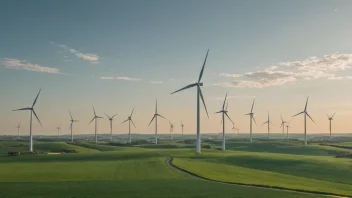In our increasingly digital world, we often overlook the environmental impact of our online activities. From streaming videos to sending emails, every click contributes to our carbon footprint. Understanding how to navigate and reduce this digital footprint is essential for fostering a sustainable future. Here are seven effective strategies to help you minimize your digital carbon impact and contribute to a healthier planet.
1. Limit Streaming Quality
Streaming services consume a significant amount of energy, especially when the quality is set to high definition. By adjusting your settings to standard definition when possible, you can drastically reduce the amount of data transmitted, thus lowering energy consumption. Consider these tips:
- Choose lower resolution options when viewing on smaller screens.
- Download content for offline viewing instead of streaming.
- Limit the number of devices streaming simultaneously.
2. Optimize Your Devices
Keeping your devices in top shape not only enhances performance but also reduces energy waste. Here are some optimization tips:
- Regularly update your software to ensure efficient operation.
- Uninstall unused applications that may drain resources.
- Use energy-saving settings, such as sleep mode and screen brightness adjustments.
3. Practice Digital Decluttering
Just like physical clutter, digital clutter can lead to inefficiencies. By decluttering your digital space, you can make your devices run smoother and consume less power. Consider the following:
- Delete old emails and files that you no longer need.
- Organize your digital storage to improve accessibility.
- Utilize cloud storage wisely to minimize local data usage.
4. Choose Renewable Energy Sources
Many internet service providers and data centers are transitioning to renewable energy sources. By selecting a provider that prioritizes sustainability, you can ensure that your online activities are powered by cleaner energy. Here’s how to find one:
- Research providers that utilize solar, wind, or hydroelectric power.
- Look for certifications or commitments to renewable energy.
- Consider advocating for your current provider to adopt greener practices.
5. Reduce Email Footprint
Emails might seem harmless, but they have a hidden environmental cost. Each email sent and stored requires energy to be transmitted and stored on servers. You can reduce your email footprint by:
- Unsubscribing from newsletters and promotional emails that you no longer read.
- Using concise language to minimize the data required for transmission.
- Deleting unnecessary emails instead of leaving them in your inbox.
6. Be Mindful of Cloud Storage
Cloud storage solutions are convenient, but they also consume energy in data centers. To minimize your cloud storage impact:
- Store only essential files and delete those that are no longer needed.
- Consider using local storage for files that do not require frequent access.
- Regularly review and clean up your cloud storage to keep it efficient.
7. Advocate for Change
One of the most impactful ways to reduce your digital carbon footprint is to advocate for broader changes in technology and policy. Consider these actions:
- Support organizations that promote digital sustainability.
- Engage in conversations about the environmental impact of technology in your community.
- Encourage businesses to adopt greener practices and technologies.
By implementing these strategies, you can significantly reduce your digital carbon footprint and contribute to a more sustainable future. Every small action counts, and collectively, we can make a substantial impact on our planet's health.






